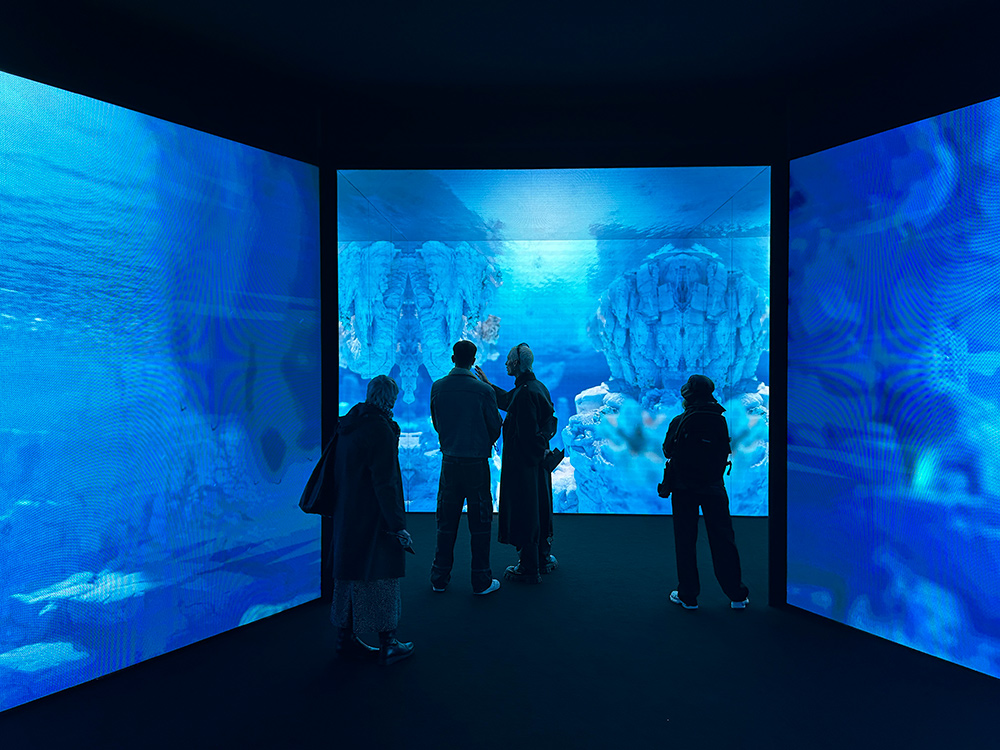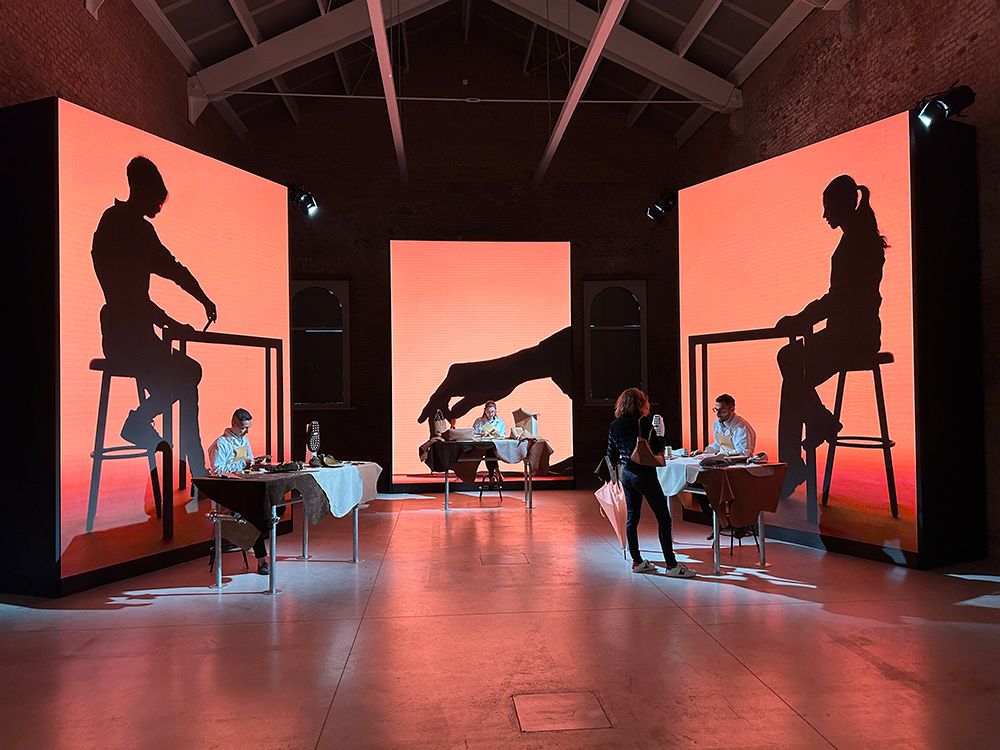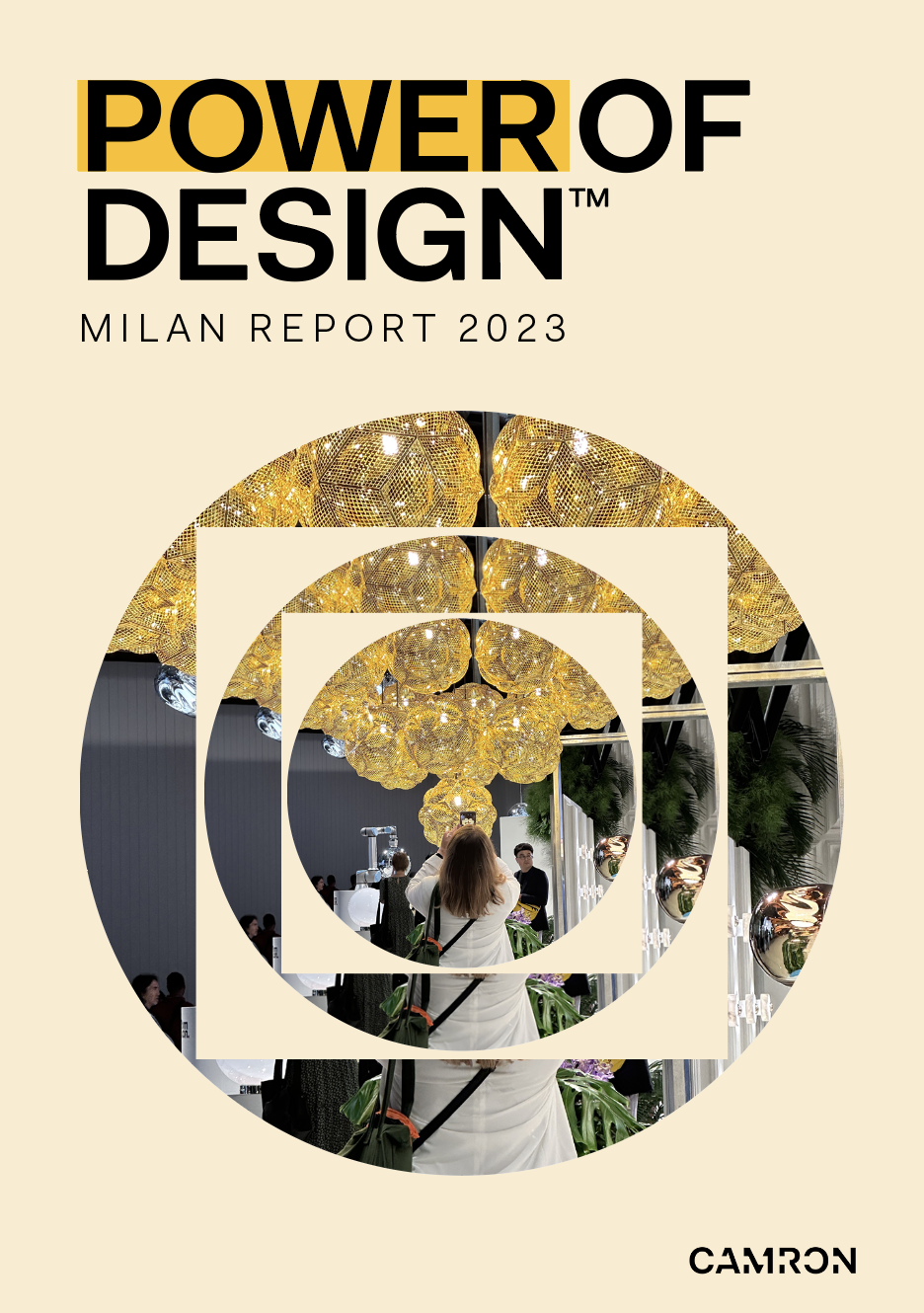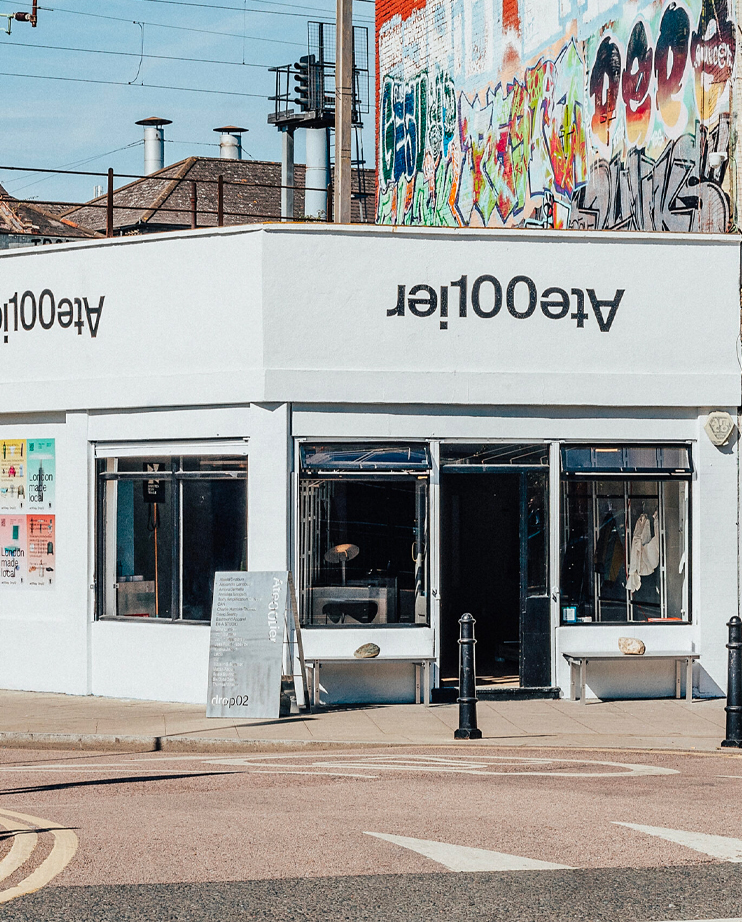A snapshot of key brand, communication, and cultural insights from Milan Design Week.

At the closing of the Salone del Mobile, over 370,000 had visited the Rho fairgrounds. Exhibitors, buyers and journalists from almost all corners of the globe descended on Milan and in many ways, the 2023 Salone del Mobile felt like it was back in form — a relief after three years of uncertainty and scaled-down events. In the city centre, taxi drivers griped to anyone who would listen about the gridlocked traffic and streets closed for events. Not to mention the hordes of sbagliato-swigging night owls clogging the roundabout in front of Bar Basso, the week’s unofficial barometer of success. However, the disruption of the past three years and subsequent cultural shift produced some subtle but significant changes to the event, which became the topic of conversations and debates amongst attendees.
One of the major shifts we’ve seen in recent years is Salone’s evolution from a trade fair to a cultural event. While the Fuorisalone has been operating for over 30 years, each edition casts a wider net, incorporating peripheral industries like fashion, cosmetics, technology and automotive. And with them, a broader audience of people who are keen to engage. Witnessing the lines of people snaking out of Fuorisalone exhibitions, it’s clear that there is strong interest amongst the general public. This means that the stakes for brands of all sectors are not only raising, but at the same time, the week’s role as a design industry event is becoming less clear.
The Fair vs the Fuorisalone
This year, the trade fair floor was reported to be around 30% smaller year-on-year. This shakeup in numbers reflects a growing trend in Milan for certain brands to forgo the fair entirely and instead redirect efforts towards permanent showrooms, which number in the hundreds within the city centre. It’s a strategic move that not only saves a brand money, but it allows them to accommodate buyers and journalists in a more personal way, which can otherwise prove difficult within the hectic confines of the fairground (it also means they can skirt the fair’s guidelines regarding sustainability). That being said, many have also skipped recent years to invest in more regional fairs, including HAY, Fritz Hansen, Fredericia and Carl Hansen & Son, who, also according to Dezeen, opted to shift their focus on 3 Days of Design in Copenhagen. However, despite the seeming exodus, reports from on the ground seem to point to the enduring value the Salone del Mobile provides. Speaking to exhibitors, the general consensus was that the fair remains the most important sales opportunity of the year.
“Less and less people are seeing the actual fair as a “must-see”, is it worth the expense? – Power of Design Contributor
Alternative strategy many brands have adopted in recent years reflect a hybrid approach, which saw many stage cultural activations at the Fuorisalone while focusing business efforts at the fair, simultaneously populating Instagram and signing deals with clients at Rho. A good example of this is carpet brand cc-tapis, who installed their collaborative project with the Charlotte Perriand archive in a deconsecrated church and launched collaborations with buzzy young designers in their city centre showroom, all while promoting their B2B contract division at the fair. In short, the fair remains the place for business, while the Fuorisalone is all about pleasure — a place to find inspiration and connect in a deeper way with the community at large.
Clearly, there’s no outright winner or lose, nor one way to turn up in Milan. Instead, it comes down to objective. Why are you appearing at Milan? What do you hope to achieve from the week and what sort of audience are you wishing to attract? If the answer is ‘shape culture’ then look no further than the city centre, but if you’re hoping to drive leads, business and connections then the fair is still unrivalled.
Is Salone becoming a fashion week?
This year, the growing presence of fashion brands was difficult to ignore. While many have launched legitimate interior collections — taking advantage of a market that grew exponentially over the past several years, largely thanks to the pandemic — others, for better or for worse, are simply banking on the attention that Salone brings.
These brands have the ability to rent out some of the city’s most exceptional spaces, often with multi-year contracts. Hermes, for instance, took up residence again in La Pelota, a sprawling former Jai Alai arena in the centre of Brera, while Loewe showed a collection of handcrafted stick chairs in the spectacular 16th-century Palazzo Isimbardi and its adjoining gardens.
Beyond the big-budgets and star power, there’s much to be admired about fashion brands’ approach to Milan Design Week – often choosing a meaningful role in cultural patronage and celebration. The interconnection and fluidity between fashion, design, culture and craft is strengthening and it no longer feels like an encroachment but a valid, valuable tenant of design storytelling. The exhibitions these brands staged were undeniably some of the week’s most enchanting. Salone provides the opportunity to delve deeper, ushering in a different and more nuanced kind of storytelling otherwise impossible during the strict format of fashion week.
New Players
In addition to fashion, this year peripheral industries like cosmetics, technology, and automotive took up significantly more space. Brands like Samsung, who launched a project in collaboration with Toilet Paper magazine, Audi, cosmetics brand La Prairie and Swiss fragrance company Byredo (who staged one of the more talked about exhibitions of the week, a large-scale installation by the artist Dozie Kanu) invested heavily in their respective design week projects, which is evidence of a trend that will likely only become more prevalent in the future.
Indeed, as design becomes more and more democratised, it will only take up a larger part of the cultural conversation — and these brands taking part are proof of that. No longer is it the case that design is a purely specialized interested. Rather, we’re witnessing a growing appreciation from the general public in a similar way to fashion and art. Meaning we should expect Milan Design Week to only grow from strength to strength in the future.







